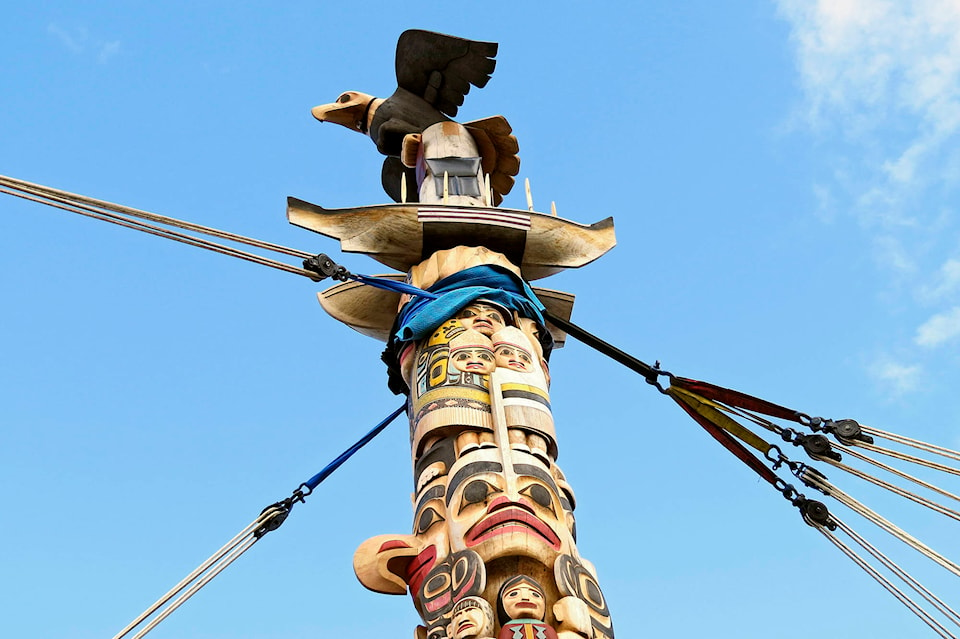Need for extra financial support tops the list for the largest barriers faced by Indigenous students as they make their way through post-secondary school in Canada, a nationwide report suggests.
The report, released Thursday by Indspire, a charity that focuses on Indigenous education, surveyed 300 students across the country attending universities, colleges and trades programs, including 35 attending schools in B.C.
It found students were also concerned about a lack of Indigenous student services on campus, Indigenous content in programs such as social work, nursing and law, and more Indigenous professors and mentors. Students said gaps in a support system on campus led to incidents of racism and resentment from peers.
“The least safe place for our students is in the classroom,” said Indspire president Roberta Jamieson. “That’s what they told us.”
Today, @Indspire released results from a survey asking Indigenous students across the country about barriers they face in post-secondary. #cdnpoli #bcpoli Here are a few of the key responses. More to come @BlackPressMedia pic.twitter.com/fPlu6qwpaq
— Ashley Wadhwani (@ashwadhwani) November 15, 2018
The report compared its findings with what the Truth and Reconciliation Commission of Canada called for in its final report in 2015, which included seven recommendations focused on education for Indigenous children and youth.
Some of those calls to action included developing culturally appropriate curricula, ending the backlog of First Nations students seeking post-secondary education, and funding to close educational achievement gaps within one generation.
Jamieson said the survey results show governments and post-secondary schools “have not fully responded” to the commission’s recommendations.
In B.C., 50 per cent of Aboriginal people aged 25 to 64 had a certificate, diploma or degree from a trade school, college or university in 2011, according to the latest data from Statistics Canada. That’s compared to 66 per cent of their non-Aboriginal counterparts.
Indspire’s report made three key recommendations: more funding for staffing for Indigenous student services at colleges and universities, a full evaluation of the commission’s calls to action, and strengthening Indigenous culture and belonging on campus and beyond.
Cultural awareness on campus
Many students felt post-secondary settings have not taken the time to incorporate Indigenous students, their history and their culture, the report said.
Student reported feelings of isolation, loneliness and being overwhelmed. Some said it caused a sense of marginalization on campus.
“There aren’t always safe spaces within the university, other than Indigenous Student Centres, that are welcoming to Indigenous students,” one student said. “Racism and violence still very much exist so it is sometimes hard to move throughout the university and not experience those things, from professors, other students, administration.”
Another student reported their peers resented them for getting special treatment and “as a result, the Indigenous students were not as welcome.”
Others said inaccurate reflections of their culture often forced them to address the misinformation.
@DKimmaliardjuk, the first Indigenous person in the country to become a heart surgeon says, “Indigenous people are the fastest growing population in this country so it only makes sense to invest in our education.” pic.twitter.com/fLGi1ooUfg
— Indspire (@Indspire) November 15, 2018
“In 2018, we do not need non-Indigenous peoples speaking about us. Make space, move over,” one student response read.
“In my field of study, it was very hard to describe how not only are we still here, but everything we do in our programs is through a Western lens. That there are Indigenous ways of reaching decisions, creation of policy, etc. It never gets recognized in my program.”
In the classroom, students noted “outdated” Western views “dominated” their course content, the report found.
The same was said about professors who lacked a knowledge of history of Indigenous people in Canada.
@ashwadhwani
ashley.wadhwani@bpdigital.ca
Like us on Facebook and follow us on Twitter.
